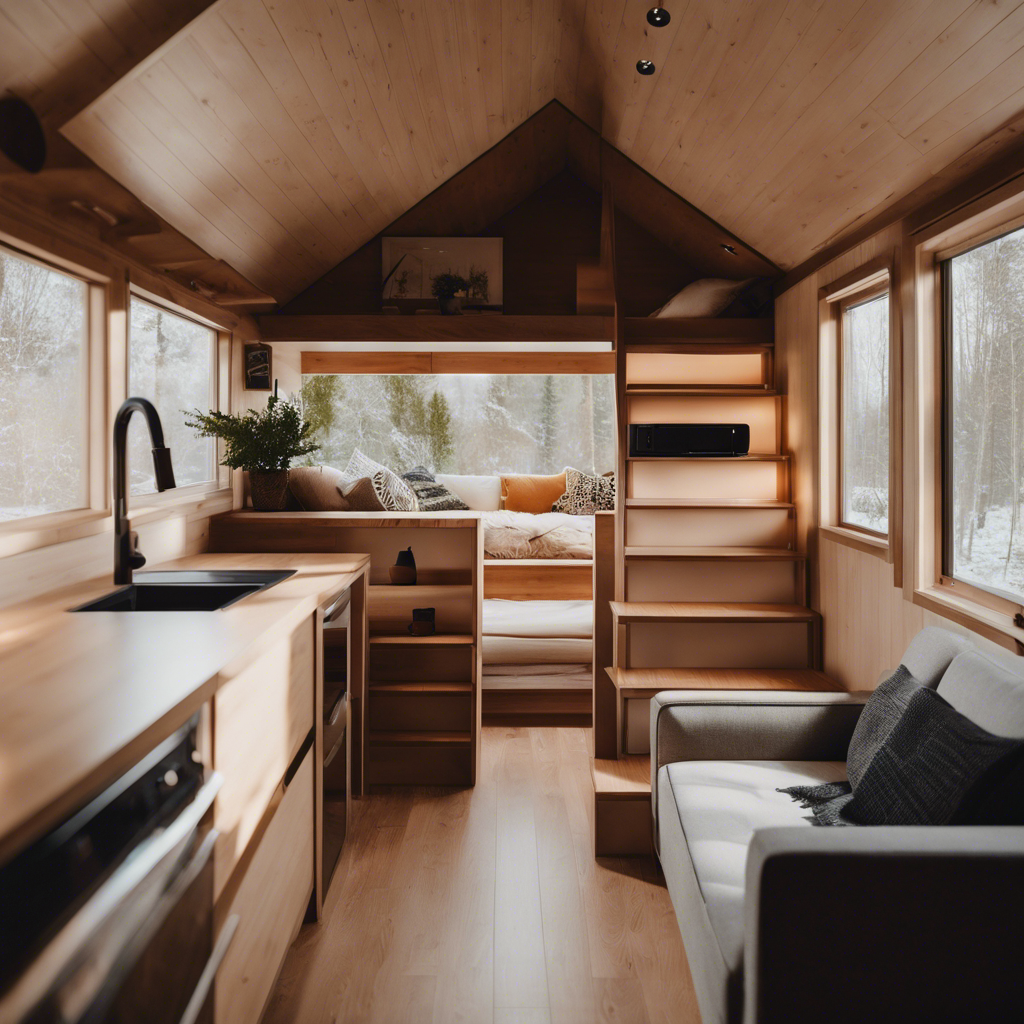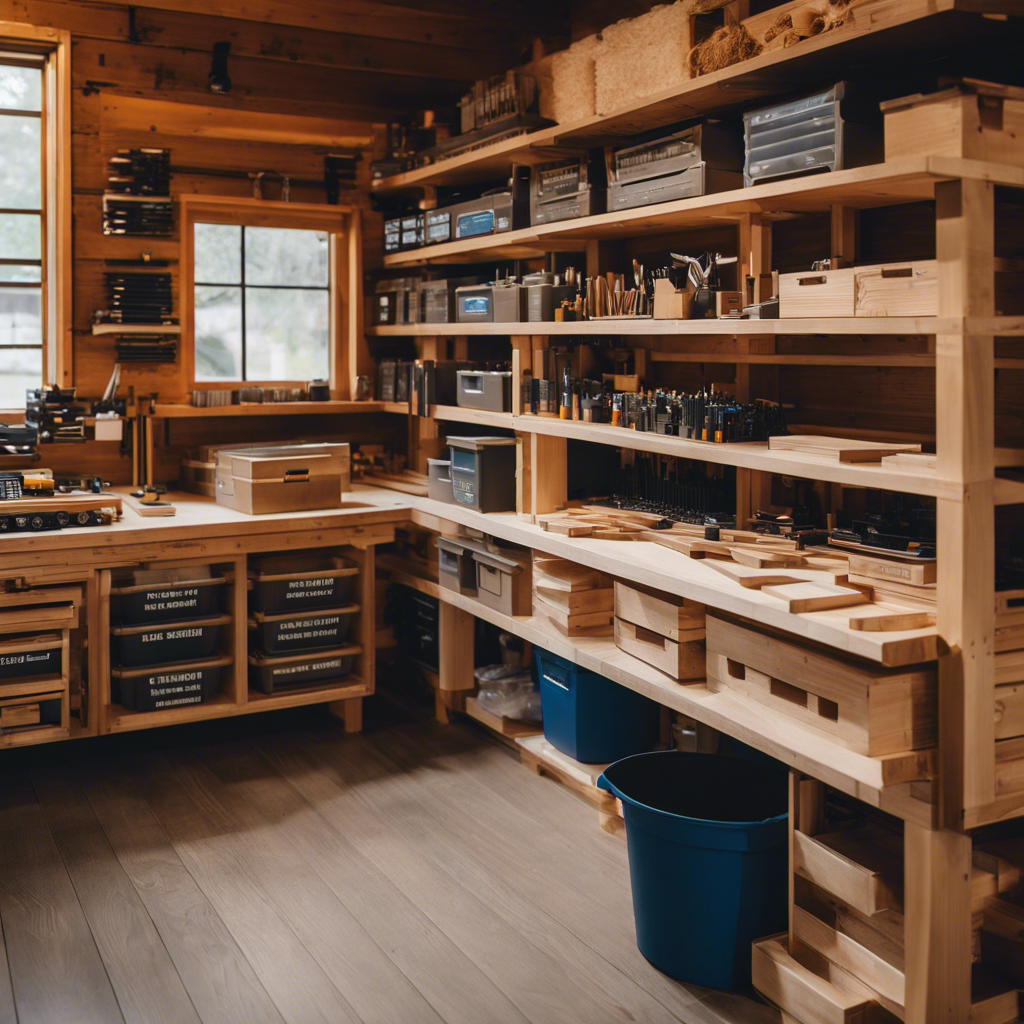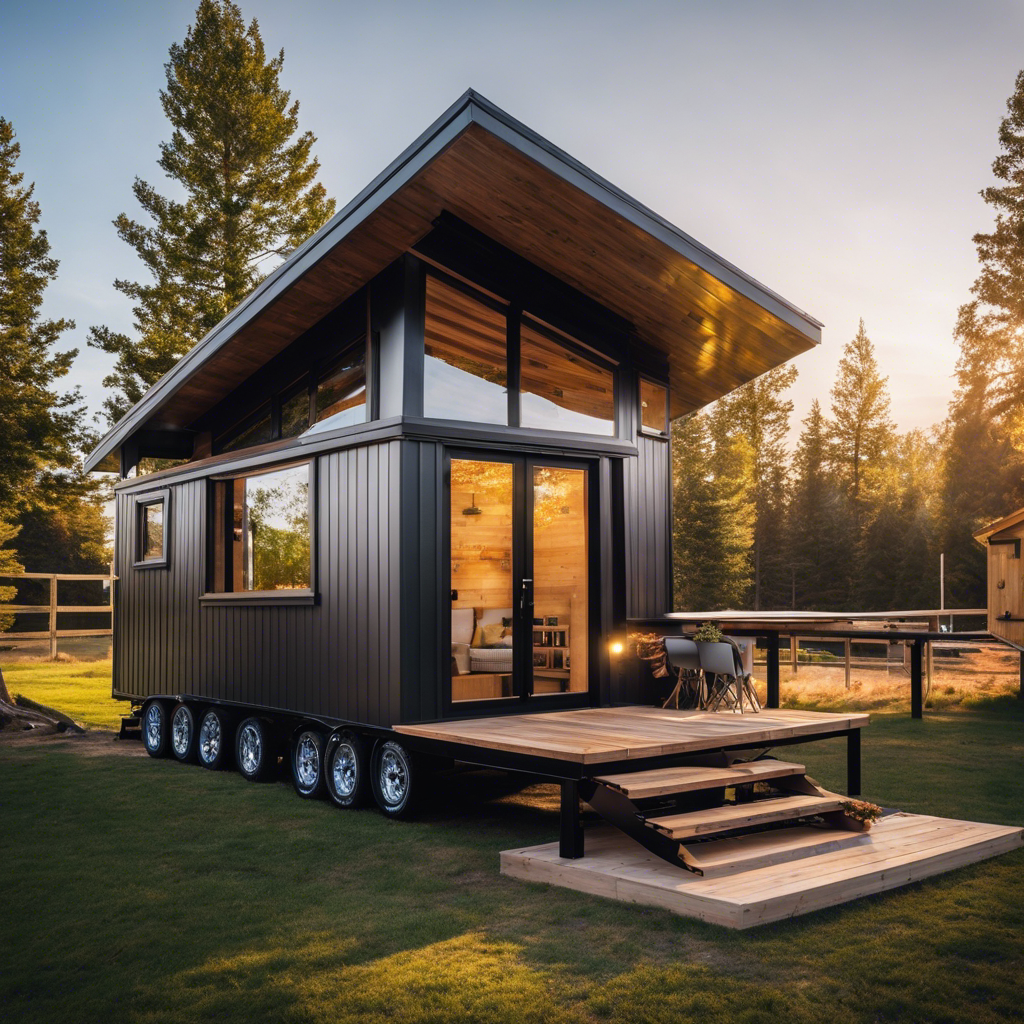Did you know that building a tiny house can be a cost-effective alternative to traditional housing, with potential savings of up to 50%?
In the pursuit of creating your dream tiny house, it’s crucial to manage costs effectively.
This article provides valuable insights and practical tips on how to slash costs and maximize savings throughout the construction process.
From bulk purchasing and strategic budgeting to optimizing material usage and lightweight design choices, you can achieve your desired outcome while keeping your budget intact.
Bulk Purchasing and Discount Opportunities

Taking advantage of the substantial discounts available for bulk purchases can result in significant cost savings during the construction of a tiny house. For example, buying materials in larger quantities can save builders $4,500. Negotiating prices and comparison shopping are essential strategies to maximize savings when buying in bulk. Engaging in negotiations with suppliers can secure even better deals and minimize expenses. Additionally, comparing prices from different suppliers allows builders to identify the most cost-effective options. This meticulous approach to purchasing materials ensures that builders are getting the best value for their money.
Considering Design Choices for Cost Efficiency

To maximize cost efficiency, builders should carefully evaluate design choices and opt for lighter materials to reduce overall weight. This not only reduces construction costs but also allows for easier transportation and installation.
When considering design choices for cost efficiency, builders should also take into account sustainable building options and energy-efficient appliances. These choices not only help reduce the environmental impact of the tiny house but also result in long-term savings on utility bills.
Here are three key points to consider:
-
Sustainable building options:
- Choose materials that are renewable, recyclable, and have a low carbon footprint.
- Incorporate passive design strategies such as proper insulation and natural ventilation.
- Install energy-saving features like solar panels and rainwater harvesting systems.
-
Energy-efficient appliances:
- Opt for appliances with high energy efficiency ratings.
- Consider using smart home technology to control and optimize energy usage.
- Invest in energy-saving lighting fixtures and appliances.
-
Proper insulation and sealing:
- Ensure the tiny house is well-insulated to minimize heat loss or gain.
- Seal any air leaks to improve energy efficiency.
- Use thermal windows and doors to further enhance insulation.
Optimize Material Usage for Savings

Maximizing cost efficiency in a tiny house build involves strategically utilizing materials to achieve significant savings. Effective material management and cost-effective construction techniques play a crucial role in reducing expenses. By considering design choices and material weight, builders can make informed decisions that lead to cost savings. Opting for lighter materials and designing with efficient material usage in mind can have a substantial impact on the overall budget. Additionally, buying materials in bulk and taking advantage of discounts can result in significant savings. Planning ahead and understanding the standard dimensions of materials can also help minimize waste and unnecessary cuts, saving both time and money. By implementing these strategies, builders can optimize material usage and achieve cost efficiency in their tiny house projects.
| Material Management Strategies | Cost Savings |
|---|---|
| Bulk purchasing and discounts | $4,500 |
| Design choices and weight | $997 |
| Efficient material usage | Time and money savings |
Strategic Budgeting and Planning

Implementing strategic budgeting and planning enables builders to make informed decisions and achieve significant cost savings in their tiny house projects. By carefully considering their budget and planning ahead, builders can prevent construction delays and ensure a smooth construction process.
Additionally, by exploring cost-effective insulation options, builders can further minimize expenses without compromising on comfort and energy efficiency. Some key strategies for achieving cost savings include:
- Conducting thorough research on insulation materials to find cost-effective options that provide adequate thermal performance.
- Utilizing proper insulation installation techniques to maximize the effectiveness of the chosen materials.
- Regularly monitoring and adjusting the budget throughout the construction process to identify areas where savings can be made.
Lightweight Materials for Cost Reduction

The use of lightweight materials is crucial for builders to achieve cost reduction in their construction projects. Not only do lightweight materials offer eco-friendly alternatives, but they also contribute to a minimalist design, which has gained popularity in recent years. By opting for lighter materials, builders can not only reduce the overall weight of the structure but also cut down on transportation costs.
To further emphasize the benefits of using lightweight materials, consider the following table:
| Benefit | Description | Emotional Response |
|---|---|---|
| Cost Reduction | Lightweight materials can lead to significant cost savings due to reduced transportation costs. | Excitement |
| Eco-Friendly | Choosing eco-friendly alternatives can evoke a sense of pride and responsibility. | Satisfaction |
| Minimalist Design | Embracing minimalist design principles can bring a sense of calm and simplicity. | Serenity |
Maximizing Efficiency in Construction Techniques

To achieve maximum efficiency in construction techniques, builders can explore various methods and incorporate them into their projects. By implementing strategic budgeting techniques and minimizing construction waste, builders can optimize their processes and reduce costs. Here are three key strategies to consider:
-
Efficient project planning:
- Develop a detailed budget and timeline to strategically allocate resources.
- Consider the use of prefabricated components to minimize construction time and waste.
- Utilize advanced software and technologies for accurate project estimation and planning.
-
Lean construction principles:
- Adopt lean construction principles to eliminate waste and improve productivity.
- Implement just-in-time delivery methods to reduce excess inventory and storage costs.
- Streamline communication and coordination among project stakeholders to avoid delays and rework.
-
Continuous improvement:
- Regularly evaluate and analyze construction processes to identify areas for improvement.
- Encourage feedback from the construction team and subcontractors to enhance efficiency.
- Invest in workforce training and development to enhance skills and productivity.
Frequently Asked Questions
Are There Any Specific Tips for Strategic Budgeting and Planning When Building a Tiny House?
Strategic budgeting and cost-effective planning are essential when building a tiny house. Consider bulk purchases, take advantage of discounts, choose lighter materials, and design for efficient material usage. These tactics can result in significant savings.
What Are Some Examples of Lightweight Materials That Can Be Used in a Tiny House Build?
Lightweight materials, such as foam insulation and aluminum furniture, can be used in a tiny house build. These materials offer energy efficiency and easy portability, making them ideal choices for maximizing space and reducing costs.
How Can I Maximize Efficiency in Construction Techniques When Building a Tiny House?
To maximize efficiency in construction techniques and achieve cost-effective building in a tiny house, it is important to consider factors such as bulk purchasing, design choices, material weight, and efficient material usage.
Are There Any Other Ways to Save Costs in Addition to Bulk Purchasing and Considering Design Choices?
Alternative cost saving strategies for a tiny house build include creative upcycling ideas and repurposing materials. By finding innovative ways to use reclaimed items, homeowners can further reduce costs and minimize waste.
Can You Provide More Information on Optimizing Material Usage for Savings in a Tiny House Build?
Optimizing material usage for savings in a tiny house build involves designing for space efficiency. Building using standard dimensions and working with 4 x 8 foot sheets can reduce excessive cuts, saving both time and money.
Conclusion
In the pursuit of building a tiny house, strategic cost management is crucial. By capitalizing on bulk purchasing and discounts, individuals can slash costs and maximize savings in their construction process. Carefully considering design choices and optimizing material usage are also key factors in cost management.
With strategic budgeting and planning, along with the use of lightweight materials and efficient construction techniques, individuals can achieve their desired outcome while keeping the budget intact.
Take control of your tiny house build and make every dollar count.


